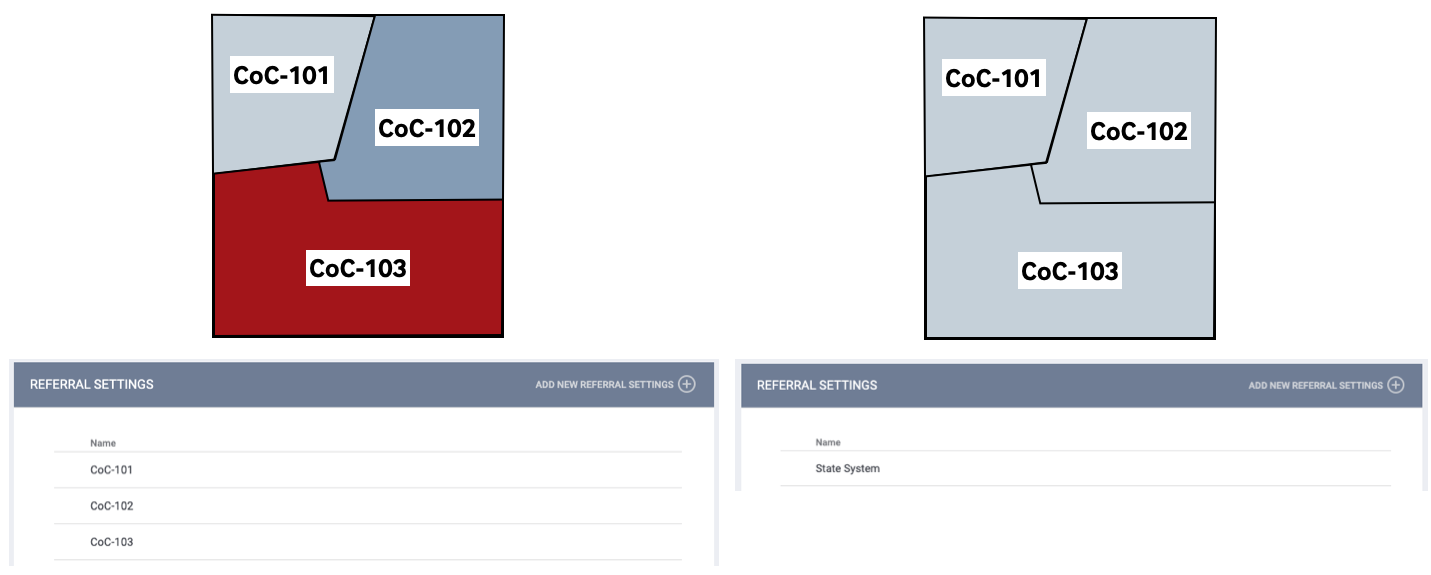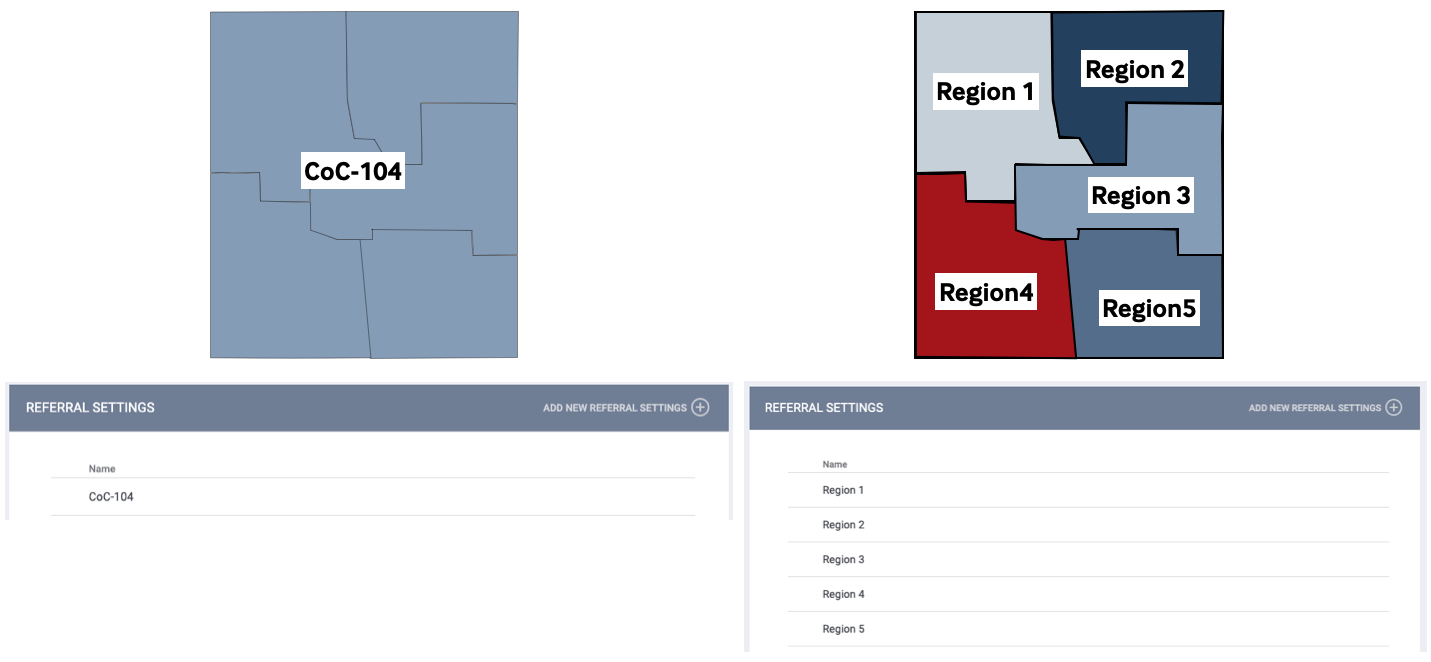Coordinated Entry Type
Learn how to designate whether the boundaries for your Coordinated Entry (CE) system will be based on your CoC or on custom regions.
Overview
The Coordinated Entry Type setting (SETUP > SETTINGS) establishes boundaries for your instance’s Coordinated Entry (CE) system. The setting you choose will affect the Referrals tabs, Community Queues, and referrals that users can see.
Coordinated Entry Type Options
The two options for this setting are as follows:
- Continuum of Care (CoC) Based: select this option to base your CE system on an entire CoC. The system will follow the Referral Settings created for the agency’s CoC. In the absence of Referral Settings created for the CoC, the configurations made to the “Default” settings will apply.
- Sharing Groups Based: select this option to base your CE system on a Sharing Group of agencies or CoCs within a Clarity instance. When choosing which Referral Settings to follow, the system looks at the following rules:
- If an agency does not have a Sharing Group with a Referral Setting assigned, the system will follow the Default Referral Setting.
- If an agency has one Sharing Group with a Referral Setting assigned, the system will follow that sharing group’s Referral Setting.
- If an agency has more than one Sharing Group with a Referral Setting assigned, the logic is as follows:
- If the agency has selected a Primary Coordinated Entry Group in the agency-level settings, the system will follow that Sharing Group’s Referral Setting.
- If the agency has not selected a Primary Coordinated Entry Group in the agency-level settings, the system will follow the most recently added Sharing Group Referral Setting.
Many instances choose to use the CoC Based setting because a CE system typically encompasses an entire CoC. However, if you need to create custom boundaries for your CE system, you should select the Sharing Groups Based option.
For example, consider a community with three CoCs using a statewide instance of Clarity. If each CoC is a separate CE system, as shown below on the left, the Coordinated Entry Type is CoC Based. But what if the CoCs within the state refer clients across CoC lines, creating the need to work within the same boundaries? As shown below on the right, you can use the Sharing Group Based setting to create an artificial boundary encompassing the CoCs and create one CE system.

Another example is a large Balance of State CoC, as illustrated below. If the entire CoC is one CE System as shown below on the left, the CoC Based setting is appropriate. However, if multiple distinct regions within the Balance of State each operate independent CE systems as shown below on the right, a Sharing Group may be created to match each independent CE system and region. Sharing Groups allow communities to create artificial boundaries for CE when CoCs need separate CE systems within the same CoC.

Consider how different CoCs share (or don't share) their CE system and clients. Are CoCs collaborating to have one CE system together? Do they pool resources together? Are clients moving across CoC borders?
Once you decide on “Continuum of Care Based” or “Sharing Groups Based,” refer to our "Configuring Coordinated Entry Type" article for configuration guidance.
Updated: 5/8/2023